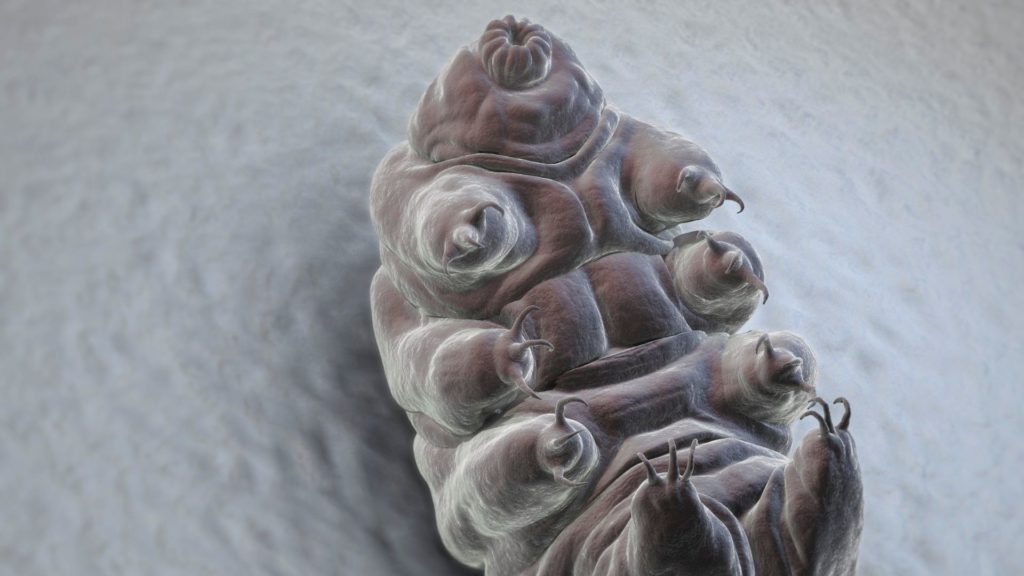You can boil them, freeze them, even bombard them with cosmic radiation – but still they live. Tardigrades are the planet’s masters of survival.
WHAT DOES THE WORLD’S SMALLEST VACUUM EAT? – Also known as water bears, tardigrades are just 1-1.5 millimetres long – the spectacular example here has been enlarged to 400 times its original size with an electron microscope. Most tardigrade species feed almost exclusively on algae. To eat, the creatures press their mouth cone against the cell membrane of an alga. Two dagger-like teeth then pierce the outer skin of the plant and the tardigrade sucks the entirety of the cell dry. Predatory species use the same principle.
CAN TARDIGRADES PLAY DEAD? – Without optimal conditions, the genus Tardigradata falls into a type of suspended animation known as cryptobiosis. This sees their metabolism dialing down to just 0.01 % of its normal operating level – they are as good as dead. But when the living conditions of the animals start to pick up, they wake from this death torpor. Their ability to suspend metabolic processes has helped them colonise the entire planet – tardigrades can survive in a temperature range of minus 270°C to 150°C.

HOW DO YOU BREATHE WITHOUT LUNGS? – There are some 1,000 known species of tardigrade. None of the creatures have lungs, but then none of the creatures need them: oxygen enters directly through their skin before spreading throughout the body. For this process to work they must be surrounded by a thin film of water.
WHERE DO TARDIGRADES’ HANG OUT? – Mosses, lichens and other damp areas are tardigrades’ ideal stamping ground. Up to two million of the little critters can live in a square metre of silver moss. Using sharp claws on each of their eight legs, they can cling on to plants, sand or soil during flooding.
ARE TARDIGRADES DNA THIEVES? – Researchers suspect that tardigrades can repair their DNA after their cryptobiotic sleep. When under stress, for example in harsh environments where there’s too little moisture present, their chains of DNA break into tiny pieces. Only once the animals are back in normal conditions can the repair process begin. The cell’s membrane becomes permeable, allowing foreign genes from bacteria and plants to pass through to repair and replace their DNA. The image here was taken through a confocal microscope to give an accurate 3D resolution.














